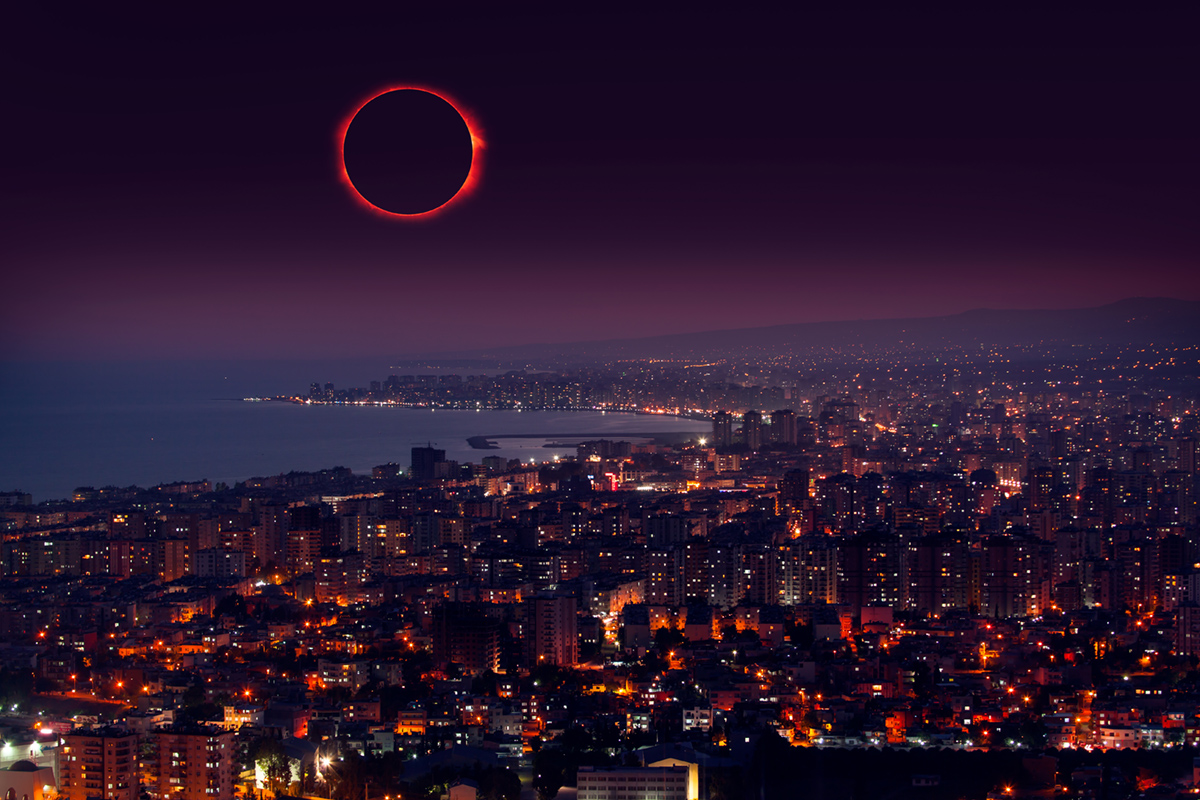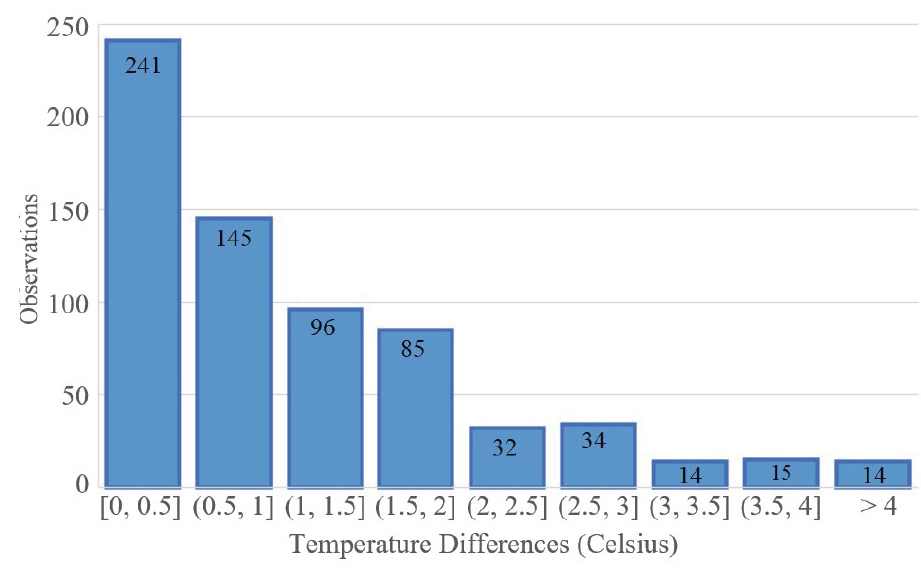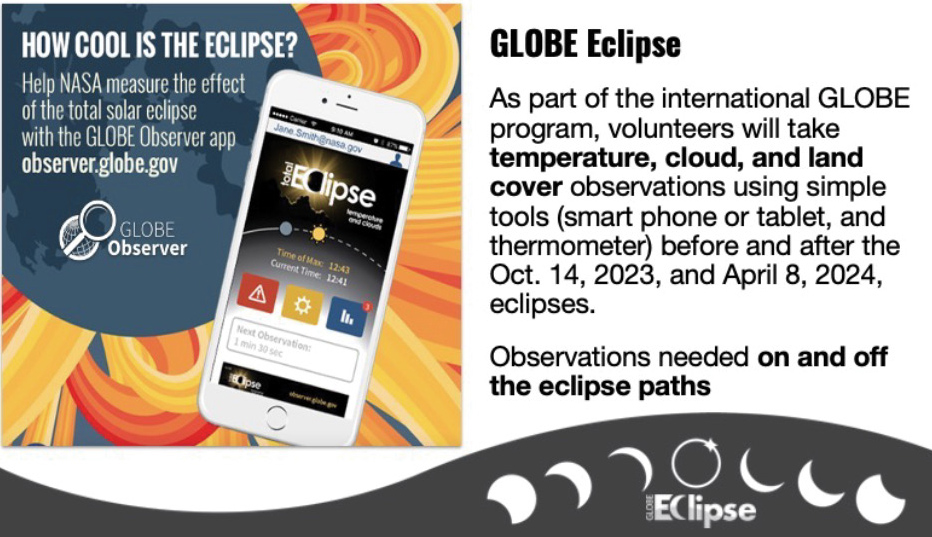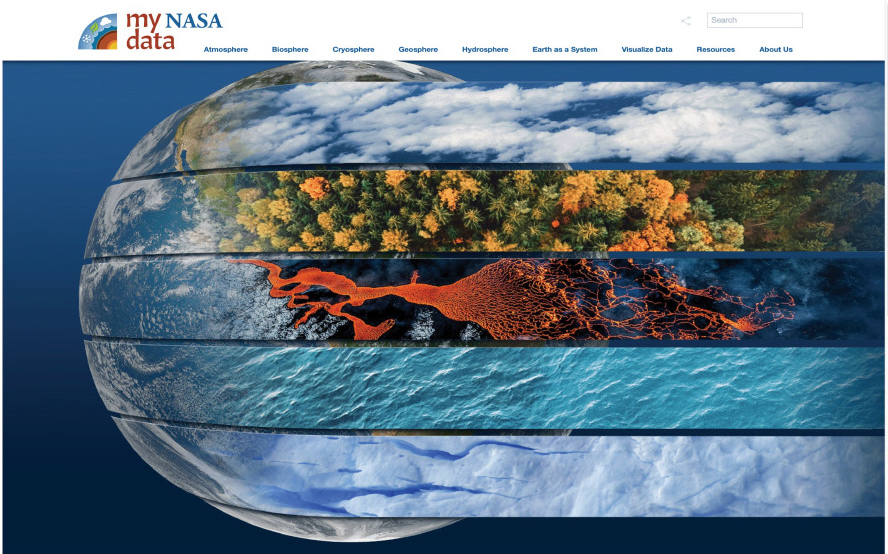feature
The Upcoming Solar Eclipses
Suggestions for engaging your students in "phenomenal" experiences
Science and Children—Fall 2023 (Volume 60, Issue 7)
By Janet Struble, Kevin Czajkowski, Angela Rizzi, and Jessica Taylor

It is not often that students can experience a phenomenon in real time as spectacular as a total eclipse. During the 2023–2024 school year, two solar eclipses will occur across the United States, giving teachers and students who are fortunate enough to be in the paths of totality an amazing opportunity to ask research questions, collect data, analyze results, and present their findings related to the eclipses. The phenomena of eclipses address the Next Generation Science Standards (NGSS) of Earth’s Place in the Universe. Learning how this event occurs builds student understanding of the placement of the Sun, Moon, and Earth in space and the reason these occurrences are rare and do not occur every day. Students can observe the changes in their environment during the eclipse and how this impacts animal behavior. Students can collect, analyze, and share data about the clouds, air temperature, and surface temperature before, during, and after the eclipses (analyzing and interpreting data). Teachers can address the crosscutting concept of patterns and practices of obtaining, evaluating, and communicating information by having their students predict what will happen, gather and analyze their data, and present their research to their peers at conferences. NASA and the Global Learning and Observation to Benefit the Environment (GLOBE) program have joined forces to help students to understand the phenomenon of eclipses. Let’s find out what is out there.
The 2023–2024 Solar Eclipses
The two upcoming solar eclipses include an annular solar eclipse on October 14, 2023, across the western United States and a total eclipse on April 8, 2024, in the eastern United States (Figure 1). The two dates provide unique opportunities for your students to observe these phenomena directly. What is the difference? What will you see at your location?

Paths of the 2023 and 2024 solar eclipses.
Solar Eclipses occur about two or more times a year, but most are not visible in the United States. According to NASA, the United States won’t see another total solar eclipse until August 2044. To see where eclipses are happening in the world, check out www.timeanddate.com/eclipse.
An annular solar eclipse occurs when the Moon is positioned in a way that the Sun is not totally blocked and leaves a thin outer ring of the Sun (ring of fire). On Saturday, October 14, 2023, the Moon will look relatively small, only covering 91% of the Sun as viewed from the narrow path that stretches from Oregon through Texas, but all of the United States will see something. Go to https://solarsystem.nasa.gov/eclipses/2023/oct-14-annular/where-when to look at the view of the solar eclipse from your location.
For a total eclipse, the Moon covers the Sun entirely; the sky is totally darkened in the path of totality. On Monday, April 8, 2024, a total solar eclipse will cross North America, passing over Mexico, the United States, and Canada. Go to https://solarsystem.nasa.gov/eclipses/2024/apr-8-total/where-when to see what will happen in your area.
2017 Solar Eclipse Research
During solar eclipses, you may see changes in clouds, air temperature, surface temperature, and animal behavior (Aplin, Scott, and Gray 2026; Barnard, Portas, Gray, and Harrison 2016; Chung, Kim, and Choo 2010; Dodson et al. 2019; Pathak 2013). During the last solar eclipse on August 21, 2017, citizen scientists including students submitted data to GLOBE (Figure 2; see Online Resources) on cloud cover, air temperature, and surface temperature. More than 10,000 observers collected over 20,000 cloud observations with 60,000 photos and 80,000 air temperature measurements using the GLOBE Observer app.

GLOBE observations of air temperature, surface temperature, and cloud cover taken during the 2017 solar eclipse by students and citizen scientists using GLOBE protocols (adapted from Rahman et al. 2019).
Below we share two examples of how scientists used the 2017 eclipse data. Dr. Brant Dodson and colleagues at NASA Langley Research Center compared GLOBE air temperature observations under different total cloud cover percentages in the path of totality (Figure 3). They found out that the changes in temperature are more pronounced in areas with less cloud cover.

Analysis of GLOBE cloud cover observations and their impact on air temperature during the 2017 eclipse. Study done by Dr. Brant Dodson (NASA LaRC/SSai).
Researchers at the University of Toledo used weather observations collected by the National Weather Service (NWS) to validate citizen scientists’ observations submitted to GLOBE (Rahman, Czajkowski, Jiang, and Weaver 2018). Results show that the students and GLOBE Observer citizen scientists provided accurate air temperature observations with accuracy within one-degree Celsius, confirming that this data can be used for scientific research (Figure 4).

Errors of GLOBE versus NWS observations at 17:55 UTC, 08/21/2017. The bins are in 0.5°C intervals and represent the number of observations that fall within that range (adapted from Rahman et al. 2019).
What kind of projects could your students do? Your basic research question starter is “How did ________change over time during the solar eclipse?” Your students may want to study “How did the clouds change during a solar eclipse?”—similar to what was studied in the 2017 solar eclipse and only looking at one variable. For older students, the project might look at how two variables change during a solar eclipse, such as air and surface temperatures. For ideas on research projects, go to the Mission Earth webpage (see Online Resources) to see what projects students have done for your grade level. If you need more help in planning, go to the My NASA Data website (https://mynasadata.larc.nasa.gov) to find lesson plans and activities (described below).
Solar Eclipse Viewing Safety
Remind your students: Do not look directly at the Sun. You will need glasses with special-purpose solar filters. Be aware not all solar glasses follow the same safety standard. To avoid “fake” glasses, look for glasses labeled with the ISO 12312-2 safety standard label. Old solar glasses can be used as long as there are no scratches on them. The only time the eclipse can be viewed without solar glasses is during a total solar eclipse if you are located where it is 100% totality. During an annular eclipse, you must use solar glasses the entire time or view the shadow through something like a pinhole projector.
Engaging Students in Data Collection and Research
GLOBE is a program where the worldwide community works together to understand and improve Earth’s environment by collecting data and submitting that data to the GLOBE website. The data is used to answer research questions regarding local to world environments. To get started, join the GLOBE community by setting up a teacher’s account. Find a local GLOBE Partner or choose “University of Toledo” as the partner in the drop-down menu if you do not know or have a local partner in your area. Next, you need to complete three or more eTrainings. For example, if you only want to observe and upload cloud data, you will need to do Introduction to GLOBE, Atmosphere, and Clouds. Practice collecting data with your students. Use the GLOBE cloud chart or sky window. Students can fill in the clouds data sheet and/or you can enter the data on the GLOBE website or the GLOBE Observer app. By making the GLOBE Clouds observations routine, your students will be prepared to collect data during the eclipse. On the day of the eclipse, have your students observe the clouds in the sky before, during, and after the solar eclipse. Assign groups and the times that they collect data. Space out the times to take the observations, for example, every 10 or 15 minutes. And finally, relax and just observe what is happening!

GLOBE Eclipse App visual.
After the eclipse, have your students share their data and discuss what they saw happening. Go to the GLOBE website and look at the data submitted by others. How are the data the same or different? Why?
For these two eclipses, GLOBE will release a special tool in the app allowing any citizen scientist including families, individual enthusiasts, and GLOBE trained teachers to submit data about clouds, air temperature, and land cover during the eclipse. The tool will track the eclipse and prompt observers to provide the data. You can learn more about the tool on the GLOBE Observer website (see Online Resources).
Now that you have collected observations during the solar eclipse, collected data, and submitted the data to the GLOBE website, what is the next step? Students can complete research projects. Have them generate their own questions. You can do the project as an entire class or students can work in groups or individually. You will find research project templates on the GLOBE Mission Earth website under teacher resources.
Lessons on My NASA Data
The My NASA Data website (see Online Resources) engages learners in phenomena through curated NASA satellite data. Teacher resources and information can be explored on Earth’s “spheres:” atmosphere, hydrosphere, biosphere, geosphere, and cryosphere. Under the Earth as a System tab, activities associated with the eclipse can be found under Eclipses. You will find mini lessons that take one class period, lesson plans that may take more than one class, interactive GIS story maps, and much more. For example, the lesson “How to Safely Observe an Eclipse” describes the use of a pinhole projector. Another favorite is an interactive model called “Explore Solar Eclipses” in which students manipulate Sun, Earth, and Moon models to understand how solar eclipses occur.

My NASA Data webpage.
Eclipse NASA Resources
NASA has created a wealth of information on eclipses. A fact sheet has been developed for the October 14, 2023 Eclipse (see Online Resources) and the one for the April eclipse is in development. The Pinhole Projector Activity created by NASA HEAT (see Online Resources) helps your students safely observe an eclipse indirectly using a pinhole on a cardboard sheet. Standing with your back toward the Sun, hold the map (cardboard sheet) approximately 1 meter above the ground out in front of you and project the image on a sheet of white paper or cardboard. You will observe the eclipse happening on the white sheet of paper. You can change the size of the projector hole and see what happens. Have the students predict what will happen. Another adaptation: Use a hole punch with other shapes like a triangle, heart, or star to punch a hole in the cardboard. Have the students predict the size and shape of the projection on the ground. Does the pinhole shape change the image of the solar eclipse you are seeing?

Pinhole Projector Activity created by NASA HEAT.
What Is Happening in Your Local Community
Since the October 14, 2023, solar eclipse is occurring on a Saturday, check out what is happening in your area. Look at local activities at museums, libraries, and local parks. See if your school would be willing to host a local event.
Since the April 8, 2024 total eclipse happens on a Monday, find out what your state, district, or school will be doing. For example, in Ohio, most schools in the path of totality will not be in session. Educators are recommended to refer parents to local activities at museums, libraries, and local parks. With the schools being closed, teachers are planning informal gatherings at local parks for example.
Engaging your students in the viewing of the solar eclipses supports the principles of the NGSS. The phenomenon of solar eclipses from a location in the United States is not an everyday occurrence. Take advantage of these phenomena occurring this year! Experiencing the eclipse will impact your students’ lives, making it a memorable experience. The next solar eclipse in the United States will be August 23, 2044. Your students as adults can say to their children “I remember when I was in third grade, we viewed the solar eclipse with special glasses. And we observed this ___!” This awesome experience can be shared with another generation of students.
Online Resources
How to View a Solar Eclipse Safely: https://eclipse.aas.org/eye-safety/safe-viewing
The GLOBE Program: www.globe.gov
www.globe.gov/web/mission-earth
https://observer.globe.gov/do-globe-observer/eclipse
https://observer.globe.gov/hidden/science-connections/eclipse2017
https://observer.globe.gov/do-globe-observer
NASA
https://eclipse.gsfc.nasa.gov/solar.html
https://solarsystem.nasa.gov/eclipses/home/
https://mynasadata.larc.nasa.gov
https://nasa3d.arc.nasa.gov/detail/usa-eclipse-2024
https://solarsystem.nasa.gov/heat/home/
For more information about GLOBE and GME, view the NSTA TV video: www.youtube.com/watch?v=jzq28fd4m4o&list=PLGVe6BxyFHNXhjRPqX0HDBQkfsRf-2swx&index=8
The GLOBE Mission Earth at the University of Toledo and NASA Langley Research Center operates thanks to a grant from the National Aeronautics and Space Administration (NASA) awarded to GLOBE Mission Earth (#NNX16AC54A) www.globe.gov/web/mission-earth.
Janet Struble (janet.struble2@utoledo.edu) is a project manager for (GLOBE) Mission Earth at The University of Toledo in Toledo, Ohio. Kevin Czajkowski is the Principal Investigator for (GLOBE) Mission Earth at The University of Toledo in Toledo, Ohio. Angela Rizzi is Senior Outreach Coordinator/Supervisor (ADNET), and Jessica Taylor is a Co-Principal Investigator (GLOBE) Mission Earth, both at NASA Langley in Hampton, Virginia.
Astronomy Earth & Space Science


